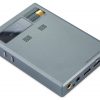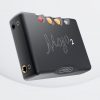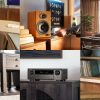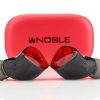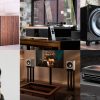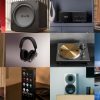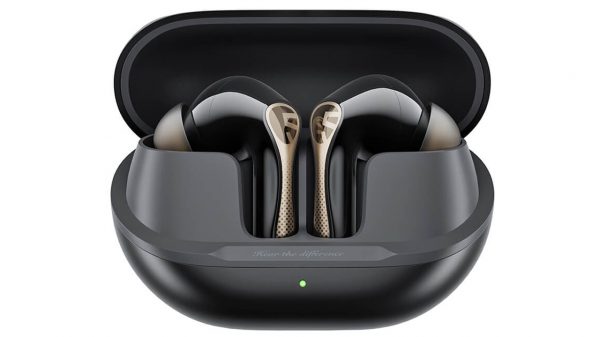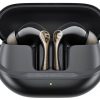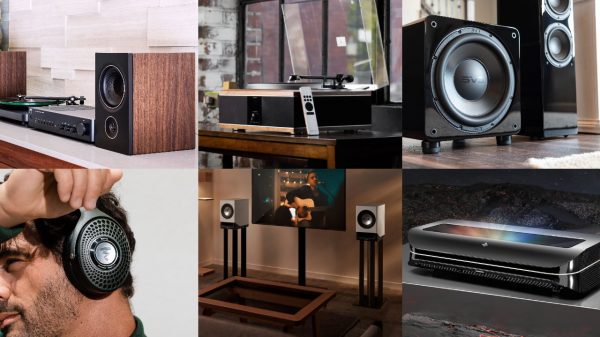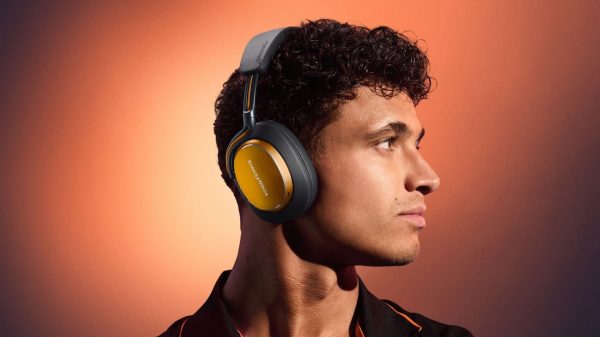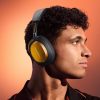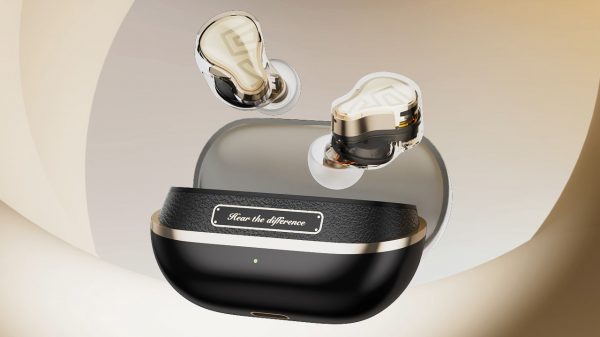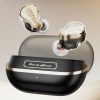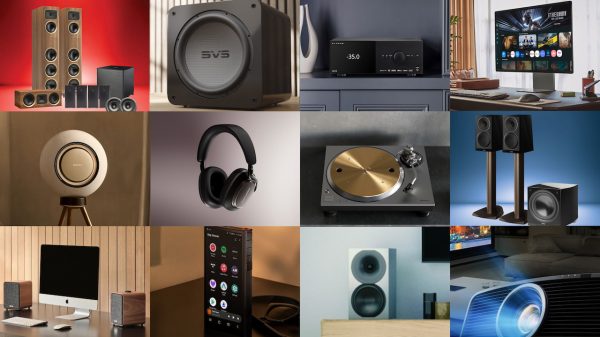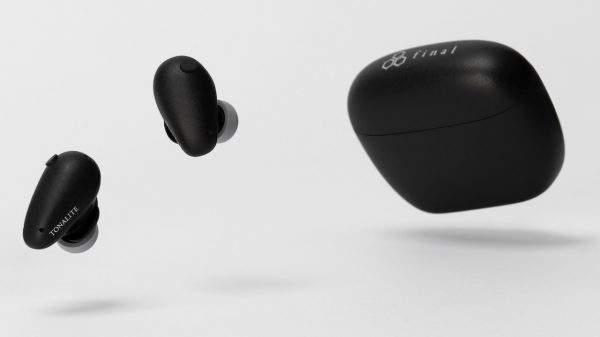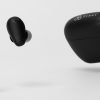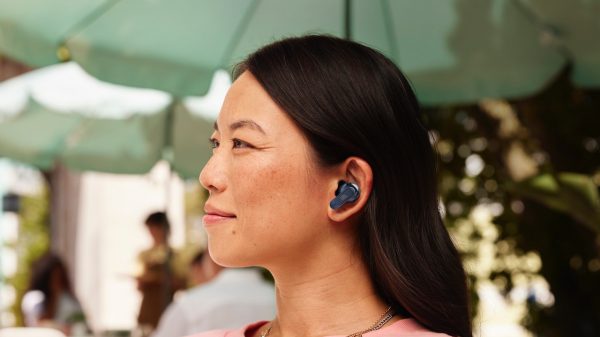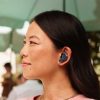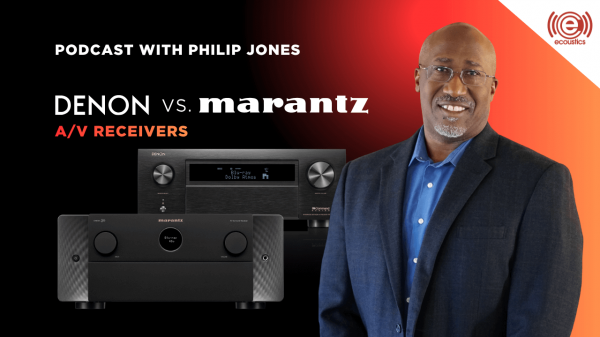It has become almost impossible to recommend one specific pair of true wireless earbuds for the simple fact that there is not one pair that does it all — and that is complicated by the reality that there are so many models available to consumers — that it’s not possible to review them all.
The Bowers & Wilkins Pi7 S2 does a lot of things really well and that made me feel somewhat comfortable recommending it to both readers and friends who care more about features and sound quality than absolute noise cancellation — and it is quite good in that department.
The Pi7 S2 have been replaced with the new Bowers & Wilkins Pi8 ($399 USD) and there are a number of interesting features that you are unlikely to find from the competition.
There is also a new Pi6 model for $249 that is geared towards a different type of listener who desires a tonal balance that is better suited for “modern” recordings — which feels like a weird way of saying for those who don’t prioritize hi-res music.

Build Quality & Fit
When one considers the $400 price and its status as the “flagship” model from the British manufacturer, the packaging of the Pi8 feels rather utilitarian; removing all of the supports and wrappers reveals that buyers receive the standard fare with their new wireless earbuds.
Bowers & Wilkins supply the charging case with the earpieces inside, a cardboard card with 4 pairs of ear tips (the medium sized tips are pre-installed), 24 inch USB Type-C charging cable, and a single USB Type-C to 3.5mm cables.
The one nod to this being a bit more boutique is that the cable, case, and earpieces are color matched; there are 4 colorways — Dove White, Jade Green, Midnight Blue, and Anthracite Black.
There are similar options for the step-down model, but no color is shared between the two.

Owners of previous Bowers & Wilkins wireless IEMs will notice that things are different the second they look at the case. It is smaller than the Pi7 case and it’s unlikely that one could charge the new Pi8 in a pinch should they misplace the new one.
The case is a top-opening clamshell design with a USB Type-C port on the bottom face. Compared to its predecessor, the case fits more comfortably in a pants pocket and will stand on the base when not charging.
When charging, the case needs to be laid on its rear face to provide visibility of the single LED charging indicator just below the lid junction on the front face. The case also supports wireless charging which we found to be easiest to get to connect with the case laid on the rear face as well.
The earpieces are a totally new style with a squared oval shaped face, a band around the outside of the face, and a small set of vents between face and body; the new length is roughly 21mm with a height of 12mm from the inner face to face plate.
The oval is positioned in the ear and the underside of the body has a slight lip that helps hold the earpieces firmly in place. In that regard, they are quite similar to the Pi7 from the perspective that both require a slight twist to lock into place — it is something that becomes part of your routine during insertion and is effective.
The IP54 splash resistant rating combined with the locking action makes them a rather good choice for the gym, but not something you want to submerge in water (they will not survive falling into the water whilst on a canoe trip).

The outer face plate is connected to the body via a vent strip that at first looks like a cosmetic detail but in practice are a series of small but functional vents making the Pi8 a semi-closed design — which means that there is some sound leakage.
The band around the outside of the face also differentiates the Pi8 from its little brother. The Pi6 features a completely solid face.
On the underside, the nozzles exit the top front of the inner face with an upward rake and are fairly short providing only moderate passive isolation as a result.
There are four charging pads on the underside of each earpiece that mate to a matching set in the recesses of the case. The earpieces are magnetically held in alignment while charging and flipping the case won’t dislodge them.

We found the earpieces quite comfortable and a bit improved over the previous generation for extended listening as the weight has been reduced and the shape was an easier fit for my ear.
The shape of the earpieces worked for us, but those with smaller ears might not find the comfort level during longer listening sessions to be ideal. This is definitely a case of trying before you buy them.
Technology
Inside the earpieces, the Pi8 uses a 12mm dynamic driver with a carbon cone diaphragm. This is a larger driver than the Pi7’s 9.2mm driver but the bigger change is in the diaphragm where the technology has trickled down from B&W’s larger drivers found in over-ear headphones and loudspeakers.
The carbon cone technology provides an extremely rigid structure that prevents flex regardless of frequency and creates a near-linear pistonic movement which in theory should result in improved transient response and detail retrieval that other drivers might struggle with.
The Pi6 uses a more pedestrian bio-cellulose version of the driver found in the Pi8 but here the extra cost buys more speed and control over the sound.
Bowers & Wilkins did not provide any impedance or sensitivity ratings for the drivers. The earpieces feature their own custom amplifiers so those specifications are not going to be very consequential.
The Pi8 utilizes three microphones tucked into each earpiece for both calls and ANC functions. Bluetooth is version 5.4 with aptX Lossless, aptX Adaptive, AAC, and SBC supported.
The electronics are also Apple MFi certified and provide fast pairing with both Android and iOS devices.

Connectivity
It has never been part of my reviewing methodology to read any other reviews until I have spent enough time with a product and something odd show up in my findings.
In the case of the Bowers & Wilkins Pi8, some questions started to emerge about connectivity issues. There were a number of reviews that found no issues and there were other reviews that highlighted some rather serious ones.
Because I make a point of testing any headphone product with Apple smartphones, Android devices, laptops, and a wide range of Dongle DACs and DAPs — I discovered that both camps were accurate — but the reason for those results depends on the source device and the Pi8 as well.
Based on my experience and research, we can state that those reviewing and purchasing the Pi8 are largely using aptX Adaptive or lossless codecs as they want the most out of their listening experience (and rightly so), but lossless is only available on a smattering of devices so most of the time the earpieces are dropping back to aptX Adaptive.
Therein lies the issue because not every device that supports aptX Adaptive has performed well with the Pi8. The Samsung S20, S22, and S24 have exhibited poor connectivity performance thus far.
Moving to the OnePlus12, the same aptX connection (which is forced to adaptive in developer options) didn’t suffer from the same issues, and swapping again to the older OnePlus9 (that only supports aptX Adaptive) still resulted in good connectivity while switching to a Moto G Power 5G again displayed the problem with drop-outs.
For those devices that have drop-out problems using aptX, switching them to AAC is often necessary to get a solid connection. Certainly not the best situation and hopefully something that is correctable in firmware on either the earphones or the source device but be aware that some devices seem to struggle with connectivity while others work swimmingly thus the two schools of thought that exist presently.
We will update this review if/when things change.
Bowers & Wilkins Music App
Pairing is straight forward, but you will need the music App to access most of the features. The manual provides links for the appropriate app store but users of previous generation products may be inclined to skip that step as they already have an app installed.


The bad news is the older Bowers & Wilkins app will not support this iteration of the wireless IEMs so you will see a message in the app pointing the user to the new download.
Sometimes progress requires an older app be scrapped though so it’s the price we pay for new features. The app provides access to change the touch controls which I did immediately since the default controls ANC rather than volume and play/pause which is my preference.
In addition, ANC modes, wear detection, the 5 band EQ, and Bowers & Wilkins True Sound option are provided. One thing to note is software updates are via the settings page before accessing the Pi8 itself.
Be warned that there is a distinct pop that occurs as the power cycles at the end of firmware updates so DO NOT UPDATE THE Pi8 WHILE WEARING THEM.
So How Long Can You Listen?
According to Bowers & Wilkins, the Pi8 can provide up to 6.5 hours of battery life from the earpieces and an additional 2 charges from the case before needing the USB cable.
I found those numbers to be a touch ambitious as my testing yielded close to 6 hours at average volumes with some variance depending on connection codec and ANC usage.

The quick charge feature gains an additional 2 hours of listening time on a 15 minute charge so even a short charging period is enough time to give listeners enough battery time for the daily commute or a late night trip to the gym or run.
A full charge with the earpieces completely depleted runs roughly 2 hours and recharging the case takes just slightly over that same time depending on the wired charger in use.
We used an Amazon 68W two-port GaN charger in our testing and the charge times were consistent.
Wireless charging is also supported, but requires considerably longer in our tests compared to wired charging. Those using a wireless charge pad overnight will not run into issues but those hoping for a full charge quickly should opt for the wired charger.

Case Transmission
One feature that is unique to the case and the Bowers & Wilkins flagship models is the ability to connect the case to a source via the provided 3.5mm to USB Type-C cable and use the case to transmit sound to the earpieces.
This allows use of the Pi8 with a much wider range of devices without loss of sound quality. The upside is that the proprietary case to earpiece connection is stable and lossless. The downside is that the music app will not allow for using the EQ or changing ANC settings when using the case connection.
Listening
Previous generations of Bowers & Wilkins TWS Earbuds have made our “Best” list on a rather consistent basis for the simple reason that they offer better sonic performance than 95% of the wireless earbuds on the market.
The new drivers in the Pi8 looked very promising on paper — but do they deliver even more than the previous iteration?
The first thing I noticed as I scrolled through my review playlist was that it didn’t seem to matter how well or poorly the track was mastered, the Pi8 handled them with a great deal of finesse.
They are slightly warm sounding which helps reduce some of the harsh tonality in some of my test tracks and made them a more pleasant listen without completely removing the detail in the process.
In the bass range, the Pi8 delivers solid extension and impact besting most of its competition in the wireless earbud category.
Bass information is not particularly elevated over the other ranges, but it does deliver just enough impact and listeners will notice that it does not sound laid back in the mix when required.
Bass notes are tight, textured, and delivered with excellent clarity. For those who might not feel that the Pi8 delivers enough impact and extension in the sub and mid bass, the EQ can be used in the app to fix that, and it was surprising just how much of a change it delivered. The Pi8 can handle bass heavy tracks better than you might expect.
There is no bass bleed into the lower midrange and those who desire male vocals with clarity, ample texture, and a presentation style that keeps it aligned with female vocals in the mix will be rather impressed. It is a very cohesive sounding midrange that allows choral music and duets to really shine.
Guitar notes have a rather strong edge with just enough growl to keep listeners pulled forward into the presentation and string instruments have both presence and enough texture to sound quite realistic.
Female vocals are not pulled too far forward in front of the instrumentation and the upper midrange and lower treble are presented with excellent clarity and detail and there were very few moments when we felt the treble range became too bright sounding.
Percussion snap is quite well defined and cymbals have good tone without sounding etched. There is some air and sparkle at the top that keeps the Pi8 from sounding enclosed. Somehow, the Pi8 manages to offer rather impressive detail retrieval whilst still presenting what most will call a slightly warm signature.
The soundstage is slightly wider than it is deep, but has enough height and seating the orchestra was amazingly accurate, which is rather surprising considering we are talking about a pair of wireless IEMs. The semi-open design does a very good job of reproducing enough depth to make recordings sound far more natural.
Imaging is generally not a strength of wireless earbuds, but the Pi8 deliver in that regard as well. Instruments are easy to place within the soundstage and movement on stage can be easily tracked.
Unlike the Pi6 wireless earbuds that use a less expensive driver, the Pi8 exhibited no issues with compression when tracks became more complex and the volume levels were increased.

ANC Performance
Depending on how you define ANC performance, the Pi8 is either slightly behind models like the Sony XM5 and Bose Ultra or well ahead of either one and similar to models like the Master & Dynamic MW09.
It’s a question of priorities.
Do you care more about maximum ANC performance or superior sound quality?
Sony and Bose have done a great job at removing all of that noise; annoying things like a vacuum cleaner, wind, screaming relatives — but that process impacts everything else that you hear — and does that make them inferior and not worth the asking price if you prioritize sound quality?
The Pi8 takes the approach of removing all that it can without altering the sound. That means an occasional noise will seep through, but you won’t find those strange auditory impacts to the signature when it does filter out external noise.
Another issue that has to matter if you listen for longer periods of time is comfort and heat levels. ANC wireless earbuds utilize foam tips that get warm. The flip side is superior isolation but do the Pi8 offer a better solution?
Here again the Pi8 reaches a good balance of using passive isolation to reduce outside noise and then using ANC to reduce it further to a non-distracting level.
The pass-through (Ambient) mode is also well done and does allow voices to cut through the music as long as levels are kept fairly low. I have yet to find a model that cuts outside noise through the mix at 85dB so your listening habits play a large role in how well the ambient function works.

The Bottom Line
Having sold the public on the concept that ANC is a wonder drug that can immerse listeners in a world of music listening free of noise and other distractions, is it any wonder that consumers don’t put greater emphasis on sound quality when shelling out hundreds of dollars on wireless earbuds?
The truth is that ANC doesn’t work as well as it should with specific types of noise and one should not spend $400 on a pair of wireless earbuds unless they are really competent at everything that matters.
The Bowers & Wilkins have some connectivity issues with specific sources and that will likely be remedied with some forthcoming firmware updates.
Fit and long-term comfort levels are excellent and unless you have very small ears – these are likely to sit rather comfortably in place once you twist and lock them.
The control app could offer slightly more features, but it does everything one is likely to need, and the EQ proved to be rather effective.
Battery performance is above average for the category and the ANC does just enough to keep things quiet as the music begins to unravel.
And that’s where these wireless earbuds really put some distance between themselves and the rest of the field.
If sound quality matters most and you can live with above average ANC performance – the Bowers & Wilkins Pi8 must be on your audition list. There are one of the best currently available and their rivals from Apple and Sony have a lot of ground to make up.
Pros:
- Great detail and overall tonal balance
- When firmly seated, the overall comfort level is very high
- ANC has negligible impact on sound quality
- Case provides a way to use Pi8 with non-Bluetooth enabled devices
Cons:
- Passive isolation could be better
- Connectivity issues with some devices
- Not inexpensive
Where to buy:
Related Articles:




